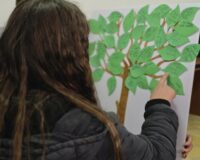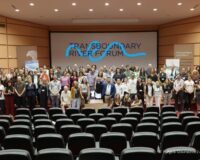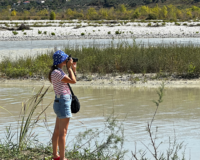By Prof. A. Miho, Department of Biology, Faculty of Natural Sciences, University of Tirana.
A few weeks ago, a draft regional strategy for sustainable hydropower in the Western Balkans was discussed in Tirana. Among other things, a list of 44 HPP projects larger than 10 MW from Albania were selected by EU experts and ranked with a priority scale to be supported for construction in the coming years. It is positive and very important to prioritize and prioritize the repair of existing HPPs. But what worries you in this list is the inclusion of 17 projects in existing and potential protected areas, which have natural features to be declared protected in the future. This is also in the wake of the hasty decision-making of the Albanian governments in the last ten years. Obviously, this is not a friendly message for our nature! It is not the right advice for our Government! As such, it urges the Government to continue with the activities already granted concessions within the protected areas, not only the HPPs, but also the tourist resorts and any other profitable activities of this category. This was strongly opposed by Albanian experts, as well as foreign participants, such as RiverWatch Austria, EuroNatur Germany, WWF Adria, etc.

The concept of sustainable development and protection of natural resources is often talked about in the pulpit, but not really implemented in practice. Consequently, the achievements for the strategy on sustainable hydropower are disappointing! If constructions in protected areas are also considered, then where does the principle of sustainability apply here? They are a very good example of what we in Albania call ‘like shaking!’, or in Europe it is known as behavior where “one hand does not know what the other hand is doing!”, beautifully written by Claue-Peter Hutter in ‘Eco-twisters: Dossier on the European Environment’ (1995). Unfortunately, such “two-faced” behavior is common in Albania, especially in these years of transition. Let me explain:
As such, the presented strategy is not at all in line with the EU reports for Albania, in which it has been repeatedly emphasized to save intact river flows from HPP projects, especially in PAs, this has been repeated specifically in April 2015, April 2016, November 2016 and February 2017. Last February, the European Parliament very clearly criticized the Albanian Government regarding its HPP policies, demanding the declaration of a National Park for Vjosa river, as well as the prohibition of HPP projects in it. “It is true that Albania needs energy and more development, but this should not be done by destroying nature”, said the vice-president of the EP, Mrs. U. Lunacek.
Designing a good and sustainable strategy does not require a high quality of experts, or a very complicated methodology or a lot of money! But something much simpler – a good spirit, a clear vision – in whether or not the concept of sustainability is really accepted, and more specifically the sustainable, and very prudent use of our natural resources. This is the basic principle for development today! It is really a basic and urgent need for Albania as well! This is the reason why we sanctioned it with special laws and rules, starting from Article 59 of the Constitution. We also teach it to our students, future experts, even schoolchildren. But this was not born and elaborated in theory by us here, experts of a developing country, but from the experience of more developed countries (even from their suffering from the implementation of unsustainable practices!). And this mostly originates today from EU directives, the implementation of which is often referred to as “homework for Albania”.
This is where our permanent efforts are supported for the protection of nature, the protection of forests, medicinal plants, for fishing and hunting, for land use and urbanization, for pollution, for protected areas, etc. For all the mentioned issues, we have big problems in Albania, aggravated especially during the last 20-30 years. Why these problems? There is no doubt because most of us do not accept sustainability, especially when it comes to decision-making, but we want to develop as soon as possible and at all costs! Often this is justified with the mindset of ‘making up for lost time! This is why in the last few decades we have overexploited, almost to the end – forests, medicinal plants, wild animals, fish, etc. This is also the reason for going down the dead end, dark and quite dangerous roads of pyramids and cannabis! Due to the extreme historical poverty and lack of experience, from where the short-sighted convictions in unbridled decision-making originate throughout this period, our economy today continues to rely almost entirely on the exploitation of raw natural and biological resources. There is a truncated development of other important sectors of the economy (agriculture, industry, tourism, etc.).
After the destruction of the forests, the occupation of the coastal zone (fringe urbanization), the last natural wealth not exploited remains the river flows, many of them intact and a part within the protected areas. These areas are almost free, without ownership, where the only owner is the central or even the local government. To obtain a building permit on these properties only a few modest fees are required to pass the bureaucratic procedures! In this sense, our natural resources are ‘orphans’, every day exposed to the risk of eager exploitation! This is the reason that the last governments during the period 2005-2017 have given permission to build more than 500 HPPs, small and large spread everywhere in Albania, a good part of them within the ZM or ZM- potential.
Of course, construction within PAs cannot be environmentally friendly, therefore it cannot be sustainable in principle. Why do we protect PAs then? From what harmful activities, if not from the building activities of man? Let me mention some non-friendly devices that connect me to HPPs: causes of river ecosystems (from roads, dams, tunnels, canals, new materials, new transmission lines, etc.); slope erosion (coastal slopes, fragile slopes above, etc.); depletion of biodiversity for their species and habitats (both aquatic and terrestrial); changes in biocorridors (for invertebrates, fish and other aquatic vertebrates); up to the microclimatic severity of the river ecosystem (in evapotranspiration-humidity, in air and water temperature, etc.).
Let’s understand that we are not against the construction of HPPs unequivocally! But their construction within protected areas and within areas with potential nature values is not clear. That is why professional opinion in the country and around the world always opposes such hasty decision-making! Not that they belong to the category of “crazy people” who want to be surrounded only by virgin lands and accept poverty, but they can see the education parts of society with the best idea about love. This is also reinforced by the wrong place happens; thus, due to environmental effects hastened in the past, river engineering instead of industrial has resulted in the negative environment, with the tendency, requiring expensive restoration measures.
In the large HPPs drawn within the existing or potential PAs, the HPPs of Valbona, Curraj, Shala, Cemi, a good part within the KP of Valbona and Theth, or all within the KP of the Alps (planned to be announced); the HPPs of Qarrishta, within the KP of Shebenik-Jablanica, as well as the HPPs on the Vjosë river (Kalivaç and Poçem) are part of it. This list of these 17 HPPs cannot be a “green list” for the Albanian Government as the strategy claims, but a “red” list, a “do not touch!” list. It is worth saying that comparing the reports of the EP mentioned above, the construction of HPPs in the valley of Valbona has been opposed a lot, even in court, and in this way also the case of Vjosa. In the last over 30 local scientists and from all over the world have opposed the last year of dams in Vjosa, the river with the free flow of all Europe. There is no way that decision-making remains deaf to all this harassment. In the end, all aim at a common goal – to be safe in the country!
It is estimated that the total production capacity discussed in 17 HPPs is about 535 MW. This is all 24% of the total production capacity (of about 2,200 MW) that Albania will be able to produce if all the HPPs are built, has already been given in concession. But my building them is the price that our society today has to pay to stay stable – to balance the right success for me in the economic one, and along with me are their prices in the country – as a person for a truly sustainable development.
Sustainable development is a very beautiful principle, and frankly quite necessary nowadays, but not without a cost! If we all accept it, from the EU to Albania, we all have to think about finding other energy sources to meet the needs! It is well known that over 2100 kwh/m2/year of energy comes from the sun in Albania – this means more than 300 sunny days in a year. Why not also see the opportunity for investments in the use of solar energy? TAP will soon arrive in Albania, while the Vlora TEC with a total capacity of 100 MW, built with great fanfare years ago (US$ 130 million) – has not been in use since the start of deployment at work (year 2010)! Why not see this opportunity too?! Why not look at other alternative sources of energy? Wind, biogas, etc.?! Durability is longer lasting and even better supported when multi-sourced!
But even if the possibilities are not, or are not immediately found … to fulfill the principle of sustainable use that we all love in words, why not limit the use, avoid waste?! This is closely related to our responsibility to renew, preserve and improve our assets for use not only today, but also by future generations. In simpler words, sustainable development means that the ‘full plate’ that is put in front of you is not finished all, but a part is saved for tomorrow, for yourself or for others who come after!







